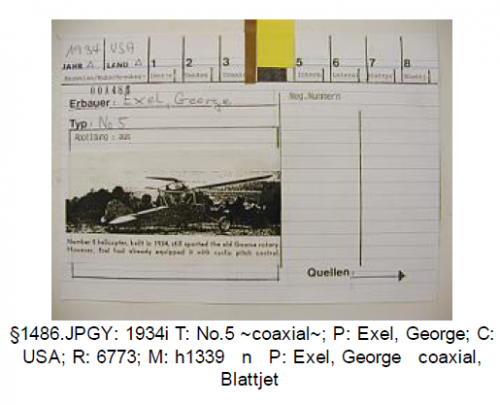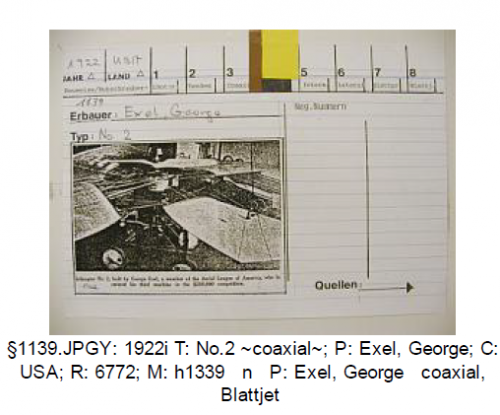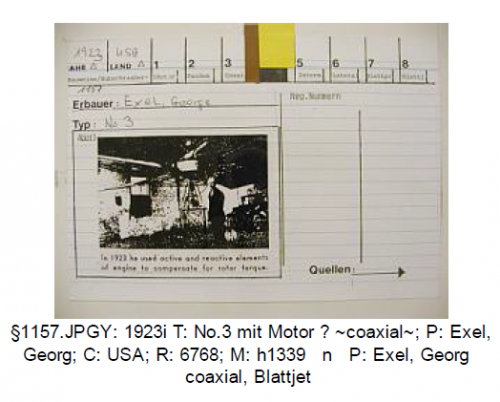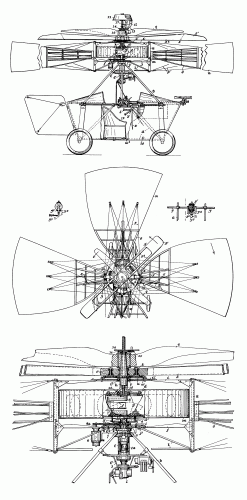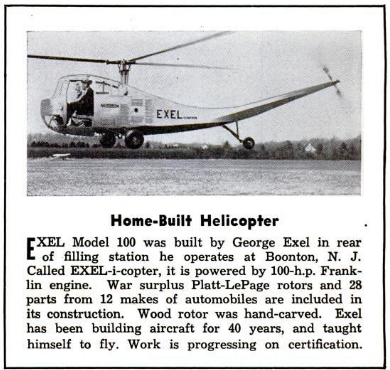- Joined
- 26 May 2006
- Messages
- 34,911
- Reaction score
- 15,787
Hi,
I spoke before about this designer;
and here is his early activities about rotorcraft;
I spoke before about this designer;
and here is his early activities about rotorcraft;
George Exel, Clifton NJ.
#1 1920 = 1pOH; 50hp Gnôme; rotors: 21'6". Empty wt: 654#. Two-blade coaxial rotors. In tests the helicopter was barely able to hover without the pilot on board, and the control system proved ineffective.
#2 1923 = 1pOH; 80hp LeRhône; rotor 24'0". Co-rotor system. "The co-rotor system refers to the idea of reacting shaft torque of an engine-driven propeller or screw by the crankcase [of the rotary engine], to which the reacting rotor is attached. In Exel's arrangement the crankcase drives the lifting screw [propeller] while the otherwise stationary shaft of the rotary drives the rotor in counter-rotation." Propeller diameter was 8'4". Tests were conducted indoors in 1923. With full throttle and the operator standing beside the machine, it barely lifted one wheel off the ground.
#3 1925 = 1pOH; 80hp LeRhône. Rebuild of #2. An intermediate rotor was introduced making it a "triaxial" machine because of its three rotating members. A new, 6' lifting screw was used, while that of the two-blade intermediate rotor was 14'. The latter included in its hub a planetary gearbox. In tests this variant was able to lift off the ground, but the control system proved to be of little use.
#4 1926 = 1pOH; 110hp LeRhône. A modified version of #3. The intermediate two-blade rotor was replaced by a 16' four-blade rotor. Thrust was improved, but not controllability. Destroyed in a windstorm in late 1926.
#5 1930 = 1pOH; 110hp LeRhône; upper rotor: 9'6" lower rotor: 34'0". A co-rotor design. For the first time a method of cyclic control was introduced, using ailerons on the main rotor blades. A swashplate accounted for both cyclic and collective control of the main rotor, which was of a more modern high-aspect ratio type. Tests showed the rotor to be responsive to the cyclic and collective system used; however, vibration was excessive, and the machine was incapable of hovering. Exel then paused in helicopter research until after WW2.

